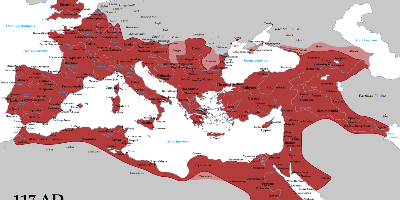1 gen 568 anni - Lombards Invade Italy
Descrizione:
In approximately 560, Audoin was succeeded by his son Alboin, a young and energetic leader who defeated the neighboring Gepidae and made them his subjects; in 566, he married Rosamund, daughter of the Gepid king Cunimund. In the spring of 568, Alboin led the Lombard migration into Italy. According to the History of the Lombards, "Then the Langobards, having left Pannonia, hastened to take possession of Italy with their wives and children and all their goods."Various other peoples who either voluntarily joined or were subjects of King Alboin were also part of the migration. "Whence, even until today, we call the villages in which they dwell Gepidan, Bulgarian, Sarmatian, Pannonian, Suabian, Norican, or by other names of this kind." At least 20,000 Saxon warriors, old allies of the Lombards, and their families joined them in their new migration.
The first important city to fall was Forum Iulii (Cividale del Friuli) in northeastern Italy, in 569. There, Alboin created the first Lombard duchy, which he entrusted to his nephew Gisulf. Soon Vicenza, Verona and Brescia fell into Germanic hands. In the summer of 569, the Lombards conquered the main Roman centre of northern Italy, Milan. The area was then recovering from the terrible Gothic Wars, and the small Byzantine army left for its defence could do almost nothing. Longinus, the Exarch sent to Italy by Emperor Justin II, could only defend coastal cities that could be supplied by the powerful Byzantine fleet. Pavia fell after a siege of three years, in 572, becoming the first capital city of the new Lombard kingdom of Italy.
In the following years, the Lombards penetrated further south, conquering Tuscany and establishing two duchies, Spoleto and Benevento under Zotto, which soon became semi-independent and even outlasted the northern kingdom, surviving well into the 12th century. Wherever they went, they were joined by the Ostrogothic population, which was allowed to live peacefully in Italy with their Rugian allies under Roman sovereignty. The Byzantines managed to retain control of the area of Ravenna and Rome, linked by a thin corridor running through Perugia.
When they entered Italy, some Lombards retained their native form of paganism, while some were Arian Christians. Hence they did not enjoy good relations with the Early Christian Church. Gradually, they adopted Roman or Romanized titles, names, and traditions, and partially converted to orthodoxy (in the 7th century), though not without a long series of religious and ethnic conflicts. By the time Paul the Deacon was writing, the Lombard language, dress and even hairstyles had nearly all disappeared in toto.
The whole Lombard territory was divided into 36 duchies, whose leaders settled in the main cities. The king ruled over them and administered the land through emissaries called gastaldi. This subdivision, however, together with the independent indocility of the duchies, deprived the kingdom of unity, making it weak even when compared to the Byzantines, especially since these had begun to recover from the initial invasion. This weakness became even more evident when the Lombards had to face the increasing power of the Franks. In response, the kings tried to centralize power over time, but they definitively lost control over Spoleto and Benevento in the attempt.
Aggiunto al nastro di tempo:
Data:
1 gen 568 anni
Adesso
~ 1458 years ago
